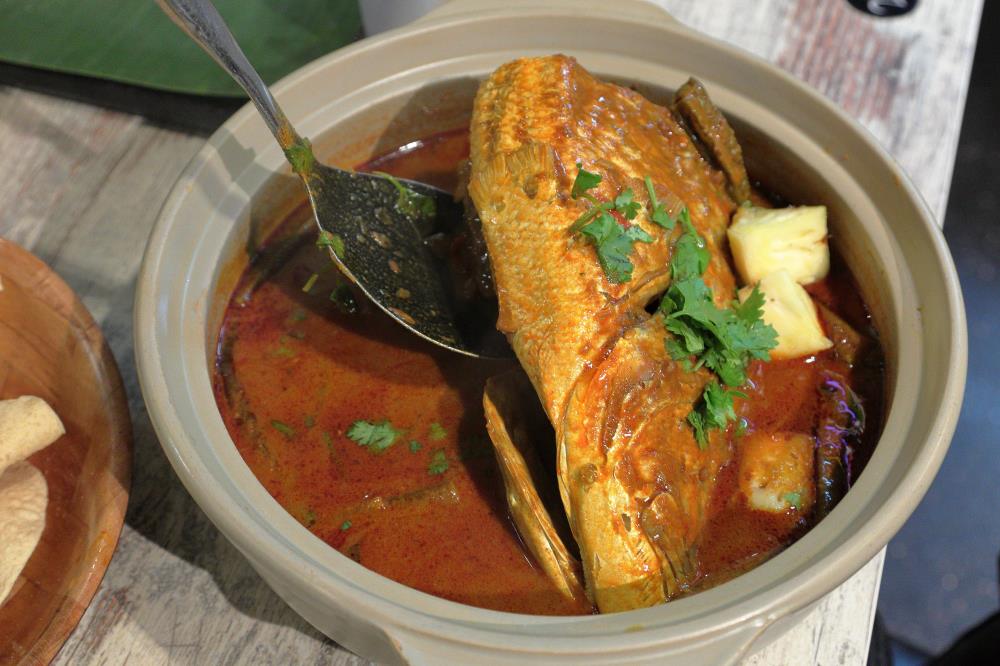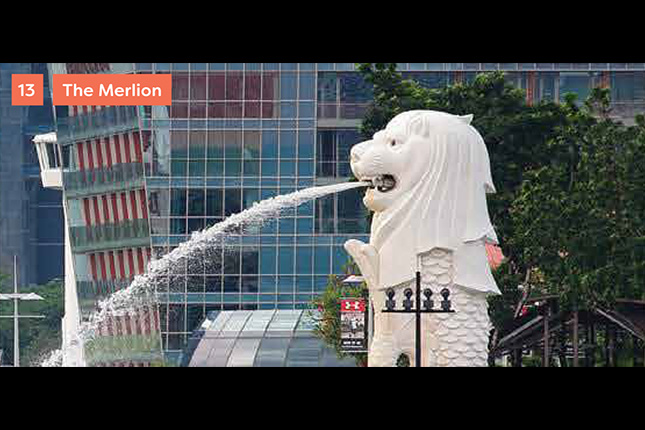Fish Head Curry
Fish head curry is an iconic dish in Singapore: the head of a sea bream, served with vegetables in a spicy curry. It is a dish that represents the fusion of various cultures and a reflection of Singapore’s multicultural identity.
Fish head curry is said to be the brainchild of Mr Marian Jacob Gomez. Mr Gomez was a Malayalee immigrant from Kerala, India. In 1949, he started a restaurant at Sophia Road. Although the head of the fish is not served in traditional Malayalee cuisine, Mr Gomez catered to his local Chinese customers by serving the fish’s head as a curry dish. The new dish was a big hit. Other restaurants followed suit and began offering fish head curry dishes too.
After Mr Gomez retired and returned to Kerala, the restaurant was run by his former staff and a friend. Over time, fish head curry was adopted by various communities in Singapore, and each community has its own version of the dish with slight variations to the ingredients and the curry.
Geographic Location
Considered to have originated in Singapore, the dish has influences from the cuisines of several ethnic groups, and there are similar dishes which also exists in Malaysia and Indonesia, where it is known as kari and gulai kepala ikan respectively.
Today, fish head curry can easily be found in restaurants and hawker centres around Singapore.
Communities Involved
Fish head curry is hugely popular in Singapore and is enjoyed by people from different ethnic and cultural communities.
Associated Social and Cultural Practices
The sea bream most commonly used in the curry is also known as the gold-banded snapper, or ang go li in Hokkien. Its head can weigh 500–600g. It is often served in a claypot with vegetables such as brinjal, okra, and tomatoes.
Over the years, fish head curry has also been influenced by Malay and Peranakan food culture, and many variations of this dish now exist. Of the Indian-style fish head curries, there are the Malayalee, Goan, and Chettinad variations. As for Chinese-style curry, it tends to be less spicy, more orange, and thinner. Pineapple is a Peranakan-inspired note, adding the sour tang usually provided by tamarind in Assam fish head. By varying the ingredients and their proportions, different establishments can serve their own takes on the dish.
Today, many older restaurants that used to serve fish head curry from the 1950s to 1970s have been replaced by newer arrivals. Restaurants which are well-known for fish head curry include Indian restaurants such as Banana Leaf Apollo, and Chinese-run eateries and stalls, such as Ocean and Zai Shun.
Experience of a Practitioner
Muthu’s Curry serves a fish head curry based on Chettinad cuisine, which is full of fresh spices. According to Ms Veshali Visvanaath, its Director of Marketing, although the recipe has Chinese and Peranakan influences, 90 percent of it is Chettinad. The exact recipe is a secret, but the dish contains garlic, ginger, onions, tomatoes, and tamarind pulp. The cooking process begins in the morning with the selection of the fish. They have to be fresh, with clear eyes and red gills. After cleaning and adding salt and turmeric to remove the pungent fishy smell, the fish heads are steamed in the oven. Then, they are added to the curry, which would be simmering in braising pans. This curry has already been cooked once, diluted with coconut milk and water, and boiled again. After about ten minutes, the fish head curry is ready to be served with fresh pineapple, spring onions, and rice.
Present Status
The dish is well documented and interested chefs can find its basic recipe in a multitude of books and online sites. It can be easily found at hawker centres and restaurants. Ms Visvanaath thinks that this dish remains so popular today partly because it has been influenced by other local culinary styles. According to Ms Visvanaath, restaurants like Muthu’s Curry strive to further enhance the dish while remaining true to the original recipe.
Ironically, according to his son, Mr Gomez had no idea that the curry he created became even more famous after he returned to Kerala. Popular with both locals and visitors alike, fish head curry is expected to remain on the list of the most iconic Singaporean dishes.
References
Reference No.: ICH-062
Date of Inclusion: March 2019
References
Chua, Beng Huat and Ananda Rajah. “Hybridity, Ethnicity, and Food in Singapore.” In David Y.H. Wu and Chee Beng Tan (eds), Changing Chinese Foodways in Asia, The Chinese University Press, 2001.
Lui, John. “Brothers Keep Muthu’s Curry Sizzling 20 Years After Dad’s Death.” The Straits Times, 7 September 2015.
Sanmugam, Devagi and Shanmugam Kasinathan. Indian Heritage Cooking. Singapore Heritage Cookbooks series, Marshall Cavendish Cuisine, 2011.
Sterbamarch, James. “Singapore Special: Fish Head Curry.” The New York Times, March 1979, https://www.nytimes.com/1979/03/28/archives/singapore-special-fish-head-curry-singapore-the-quest-for-fish-head.html. Accessed 25 April 2018.
Tan, Chee Beng. “Cultural Reproduction, Local Invention and Globalization of Southeast Asian Chinese Food.” In Tan, Chee Beng (eds) Chinese Food and Foodways in Southeast Asia and Beyond, Singapore: NUS Press, 2012.
















